When we think of flowers, the first thing that comes to mind is their beauty. Flowers come in various shapes and colors with stunning features. It’s no surprise that many people enjoy using them as decorative items. We often assume that flowers are harmless, but the truth is, some flowers carry deadly toxins that can be fatal. In this article, Toplist will introduce you to some of the most dangerous flowers in the world so that you can learn about them.
Lilies, also known as angel’s trumpet or devil’s breath, come in varying shades of white, yellow, and red. They have a sophisticated charm and are often associated with elegance when used in floral arrangements. Despite their beauty, lilies contain potent toxins that render them highly poisonous. These flowers hail from Colombia and carry the ominous moniker “devil’s breath.”
Simply inhaling the scent of these blooms can trigger sudden unconsciousness, loss of behavioral control, and incoherent babbling. Due to their toxicity, criminals and scammers have been known to exploit lilies for their hypnotic and lethal properties to poison unsuspecting victims without detection.
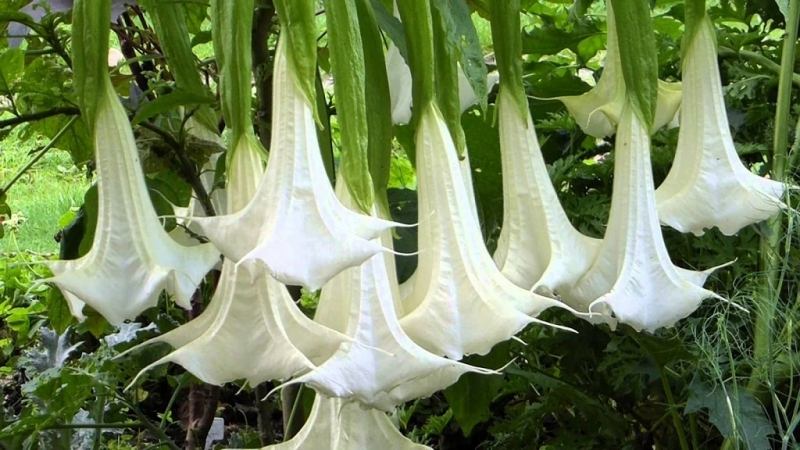
The flower commonly referred to as Lilies has a sinister nickname, “Devil’s Breath”.
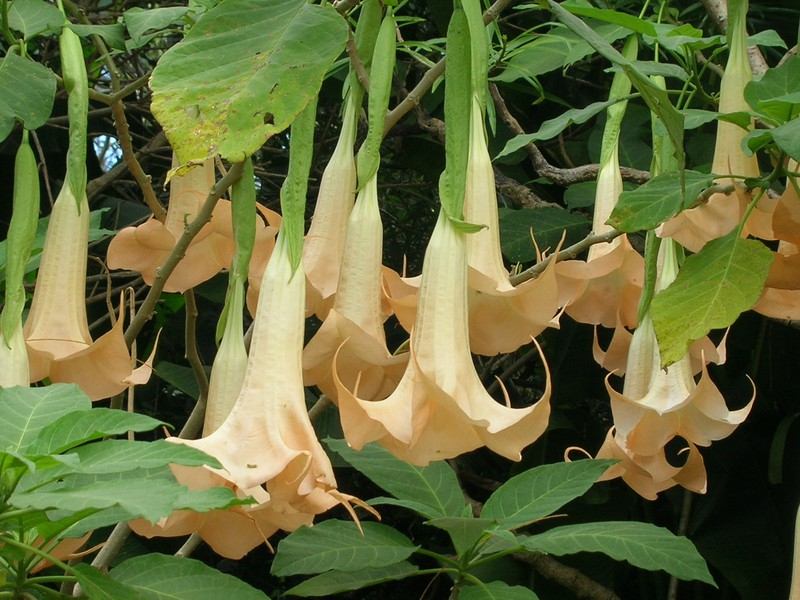
Lilies are a type of flower that goes by several names including angel’s trumpet and devil’s breath. These flowers are known for their attractive appearance with their long, trumpet-shaped petals. Despite their beauty, they also carry some danger as their scent can be toxic if ingested or inhaled in large amounts. Therefore, it is important to handle them with care. Lilies are popular in gardens and floral arrangements, adding a touch of elegance to any setting.
Wisteria, also known as purple beans, is a stunning legume flower that grows as a vine and produces beautiful purple clusters of flowers. This flowering plant is widely grown as an ornamental in countries such as China, Japan, and Korea due to its striking appearance. While its fragrant blooms are a sight to behold, it’s important to note that wisteria seeds are highly toxic. Ingesting them accidentally can lead to symptoms such as vomiting, cramps, and diarrhea. So, while you can admire the beauty of wisteria from afar, it’s best to avoid eating or handling its poisonous seeds.
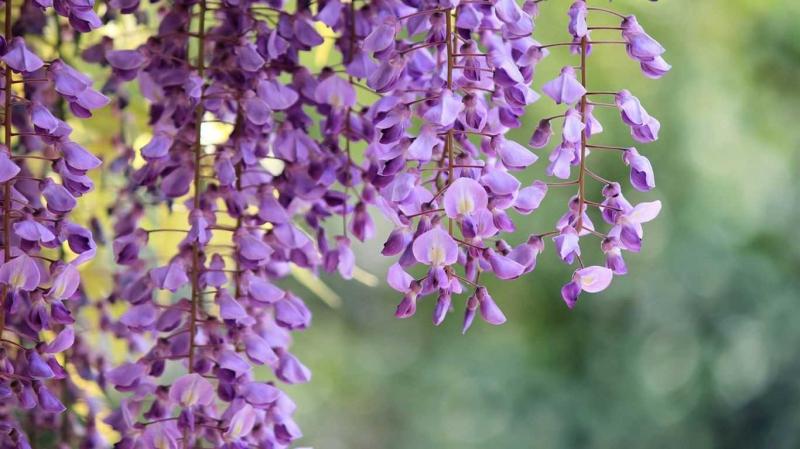
A blossoming beauty amidst mortality.
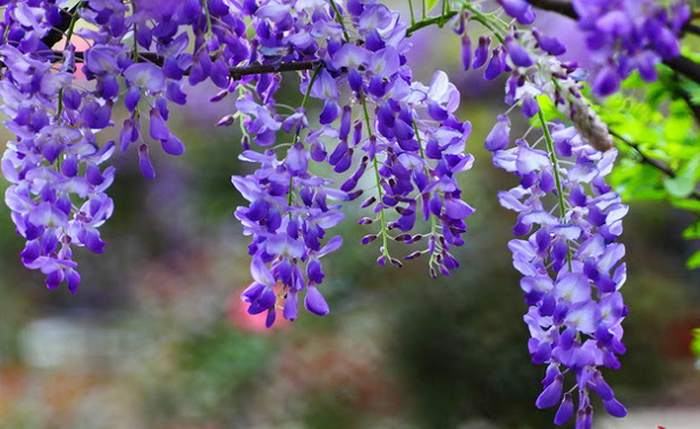
Wisteria, also known as purple beans, is a beautiful flowering plant that adds a touch of elegance and charm to any garden or outdoor space. With its long, cascading clusters of purple blooms, wisteria can create a stunning focal point or backdrop for other plants and features.
This hardy vine is easy to care for, thriving in full sun to partial shade and well-drained soil. Regular pruning will help control its growth and encourage fuller blooms.
Aside from its aesthetic appeal, wisteria has also been used in traditional medicine for its anti-inflammatory and antispasmodic properties. However, it’s important to note that some parts of the plant can be toxic if ingested, so caution should be taken when handling it.
Overall, wisteria is a lovely addition to any garden, with its unique beauty and potential health benefits.
The Hydrangea is a beautiful flower with disc-shaped petals that come in various shades of white, blue, purple, and pink. While many people grow them for their ornamental value, they are not as delicate as they appear. This is because both the flowers and leaves of the Hydrangea contain a poisonous substance that can cause severe harm if ingested. Queen Cleopatra was known to have used this flower to force a servant to commit suicide in the past. If accidentally exposed to this toxin, one may experience symptoms such as itching, vomiting, sweating, and abdominal pain. Prolonged exposure may lead to coma, convulsions, and circulatory disorders. Therefore, it is important to handle this flower with care and avoid ingesting any part of it.
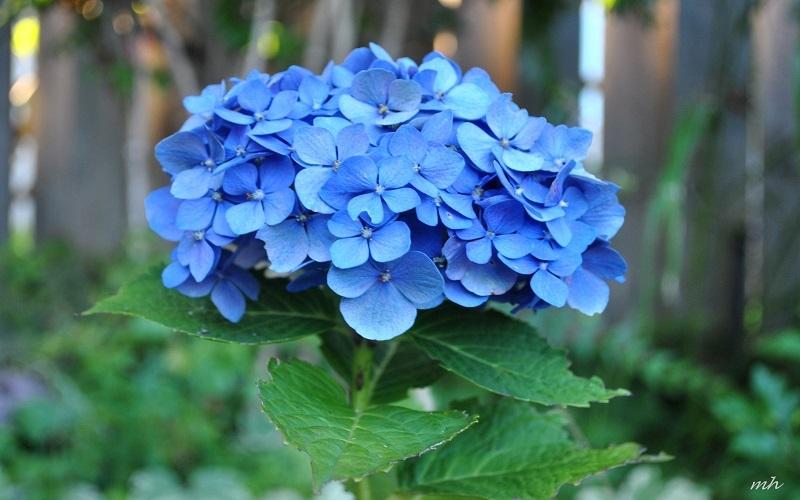
Hydrangeas are a stunning type of flower that come in a wide range of colors, including pink, blue, and purple. With their delicate petals and lush foliage, they make the perfect addition to any garden or floral arrangement. Whether you’re looking to add some color to your yard or brighten up your home, hydrangeas are an excellent choice. So why not pick up a few of these beautiful blooms and enjoy their beauty and fragrance all season long?
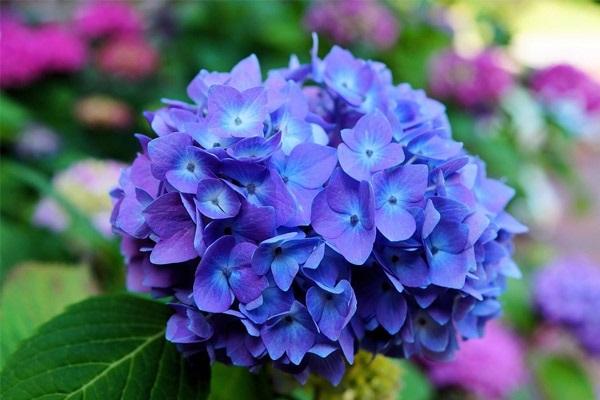
Let’s talk about hydrangeas, specifically the disc flowers that make up these beautiful blooms. These flowers are actually tiny and numerous, clustered together to create the large, showy flowers we see on hydrangea bushes. It’s amazing to think about how each individual disc flower plays a role in creating the overall beauty of the hydrangea. Next time you admire a hydrangea, take a closer look and appreciate the intricate details of its disc flowers.
The canary flower, also known as the yellow scorpion flower or Osaka flower, is a beautiful ornamental plant that belongs to the legume family. This woody plant has a round canopy and produces eye-catching clusters of yellow flowers that bloom from June to September every year. The large inflorescence droops and measures about 20-40 cm in length. The fruit of the canary tree is long and contains oval seeds inside. However, it’s important to note that the entire plant, including the leaves, flowers, fruits, and seeds, is poisonous and can cause harm if ingested. This species is also referred to as Queen Muong, Lantern Flower, Water Scorpion, String Plum, Late Spring Tree, Late Blooming Apricot, and is commonly known as Osaka or Osaka yellow flower in Vietnam.
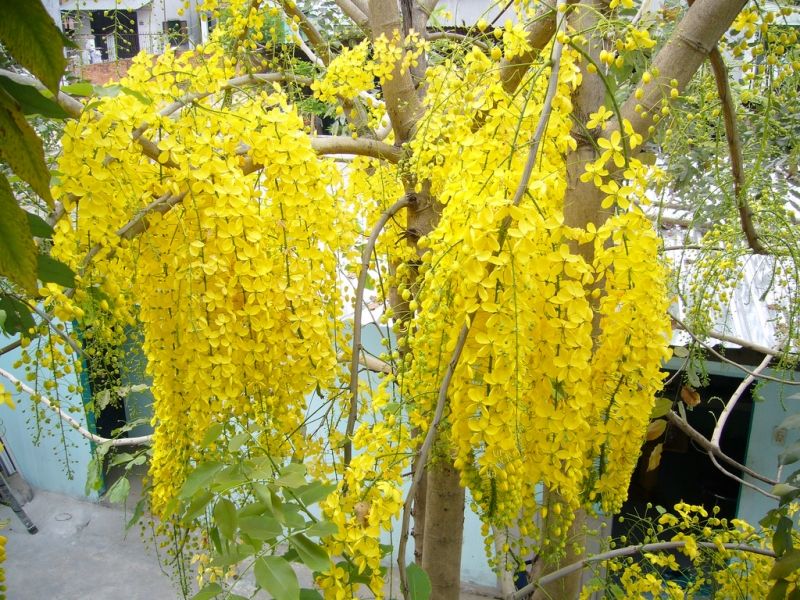
The yellow Osaka flower, also known as the canary flower, is a type of flower that can add a pop of color to any garden.
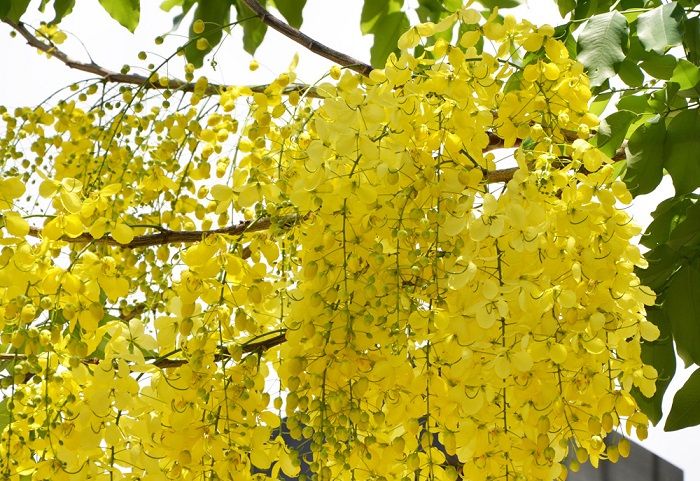
The canary flower, also known as the yellow scorpion flower or the osaka flower, is a beautiful and vibrant plant that can add a pop of color to any garden. Its yellow petals are striking and its unique shape is sure to catch the eye. If you’re looking for a plant that is both beautiful and easy to care for, the canary flower may be just what you need.
Arum, also known as safflower, is a beautiful flower that resembles the paw of a calf. It goes by many names including Calla, Water Lily, and Lily of the Nile. Safflower is often used as an ornamental plant and is found in living rooms and offices due to its elegant appearance. However, it’s important to be cautious when using safflower as a display because the plant contains calcium oxalate, which can cause poisoning if ingested accidentally. Symptoms of poisoning include vomiting, burning of the mouth, numbness of the tongue, and swelling of the mucosal surface.
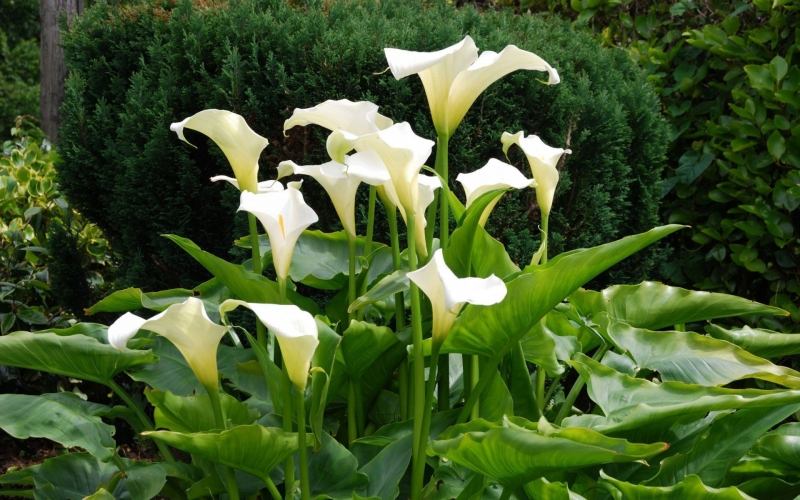
Safflower is a plant that has been used for various purposes for centuries. It is also known as Carthamus tinctorius, and its seeds are used to produce oil that has a wide range of benefits. The oil is rich in linoleic acid, which is known to have many health benefits, including reducing inflammation and improving heart health.
Additionally, safflower oil is often used in cooking due to its high smoke point, which makes it ideal for frying and other high-heat cooking methods. It is also used in cosmetics and skincare products due to its moisturizing properties.
Overall, safflower is a versatile plant with many uses and benefits. Its oil is an excellent addition to any healthy diet, and its skincare applications make it a popular choice for those looking for natural and effective ingredients.
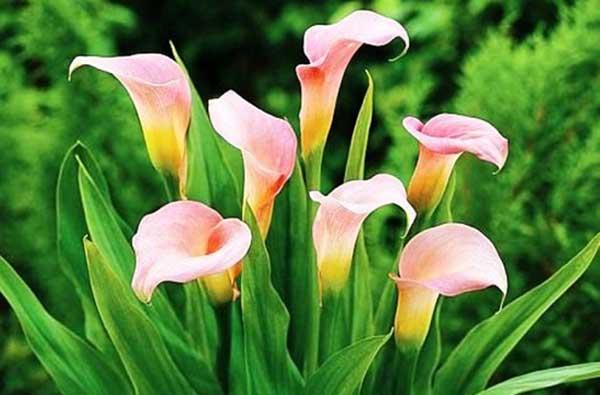
Safflower is a plant that has been cultivated for thousands of years for both its oil and its colorful flowers. The plant is native to regions of the Middle East, but it can now be found in many parts of the world.
The safflower oil extracted from the seeds of the plant is commonly used in cooking and as a base for cosmetics and beauty products. It is high in polyunsaturated fatty acids and has been linked to a range of health benefits, including reducing inflammation and improving heart health.
In addition to its practical uses, safflower is also valued for its ornamental qualities. Its bright yellow, orange, or red flowers bloom in the summer months, making it a popular choice for gardens and floral arrangements.
Overall, safflower is a versatile and beneficial plant that has played an important role in human culture for centuries.
Oleander is a plant that should be handled with great care due to its high toxicity, especially for the cardiovascular system. All parts of the plant, including stems, leaves, flowers, fruits, and seeds, are poisonous. Therefore, it’s crucial to avoid direct contact with these components.
If ingested, severe symptoms such as nausea, vomiting, lethargy, headache, fatigue, continuous diarrhea, and severe arrhythmia can appear within 10-15 minutes. If the victim doesn’t receive immediate medical attention, it could lead to heart attack or blood pressure failure, which could be fatal.
Despite its high toxicity, some areas use oleander to process pesticides because of its effectiveness. However, it’s essential to handle it with extreme caution and follow appropriate safety measures.
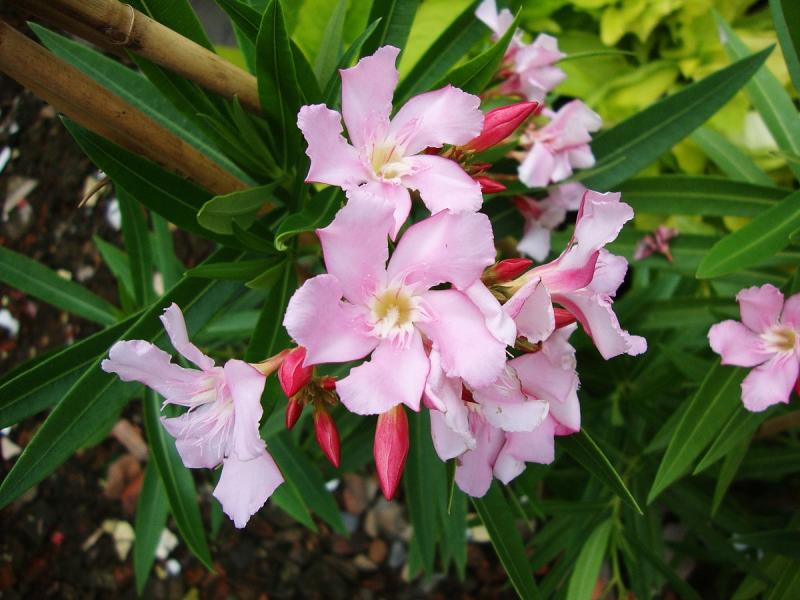
The oleander flower is a beautiful and popular plant that can be found in many gardens and landscapes. It is known for its bright colors and delicate petals, which make it a favorite among gardeners and floral enthusiasts alike. However, despite its beauty, the oleander flower is also highly toxic and should be handled with care. Its leaves, stems, and flowers all contain a poisonous substance called oleandrin, which can cause serious harm or even death if ingested. As such, it is important to exercise caution when working with oleander plants and to keep them away from children and pets. Despite this potential danger, however, the oleander flower remains a beloved and cherished part of many gardens and natural habitats around the world.
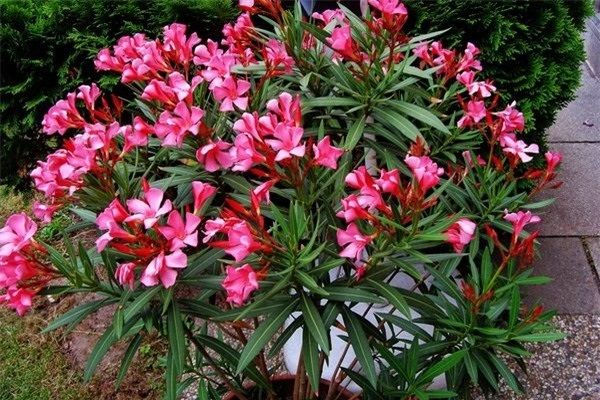
Oleander is a beautiful shrub that produces colorful and fragrant flowers. This plant is native to the Mediterranean region and is popular for its attractive appearance. It can be grown in gardens or in pots as a decorative plant. The leaves of the oleander are long and narrow, and the flowers are usually pink, red, or white. However, it’s important to note that all parts of the oleander plant are toxic, so it should be handled with care. Ingesting even small amounts of the plant can cause serious health problems, so it’s best to keep it away from children and pets. Despite its toxicity, many people still enjoy the beauty of the oleander plant and appreciate it for its unique qualities.
The Gloriosa superba flower, also known as Flowers Squiggly, is a stunning plant with large, colorful blooms that have six bright red petals resembling a tiger’s claw. It can grow up to 4 meters tall and is found in forest areas at altitudes of 900-1,300m in various countries including Cambodia, India, Indonesia, Laos, Malaysia, Myanmar, Nepal, Sri Lanka, Thailand, Vietnam, and Southern Africa. In Vietnam, it is commonly found in the Central Highlands region, often growing wild in the hills and mountains along the edge of the forest. Despite its beauty, this flower is highly toxic due to the presence of colchicine and other alkaloids, which can cause numbness of the tongue, loss of sensation, severe coma, and even death if not treated promptly. The flower clusters are attractive and bloom scattered throughout the year. The plant has elongated stems that wrap around other trees to rise up and underground tubers formed by bulging rhizomes. Its leaves are alternate, opposite or circular, and have elongated apex into tendrils. Interestingly, this flower can survive in sand dunes and other poor soil conditions.
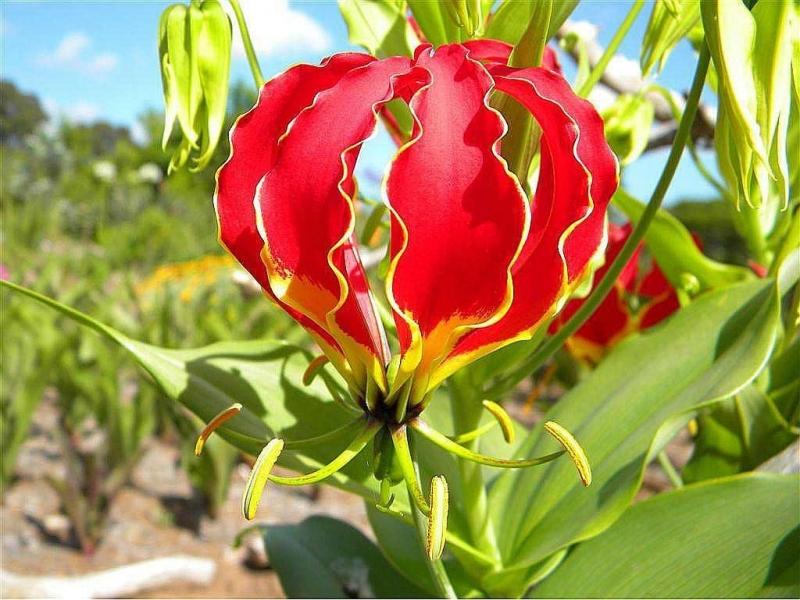
The floral patterns are wavy and curvy.
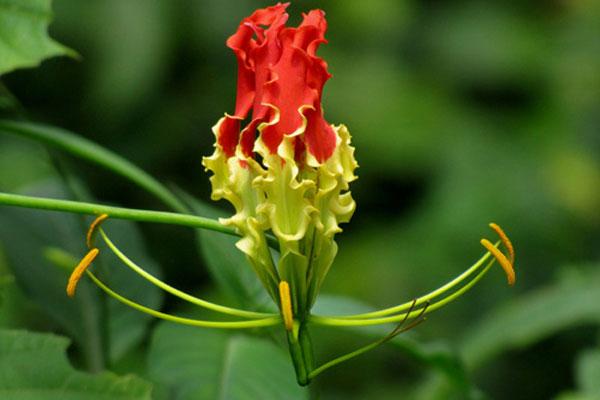
The flowers appear to be squiggly in shape.
In order for flowers to thrive, water is an essential element. Water hemlock, scientifically known as Conium maculatum and also referred to as cicuta maculata or devil’s beard plant, is a highly toxic plant native to North America. Its toxicity is so strong that it has earned the nickname “hemlock flower” and “poison beaver plant”. The leaves of the water hemlock are green, lacy and smooth, and when crushed they emit an unpleasant odor. It produces small white flowers that grow in groups, while the seeds are typically harvested in the summer when they are almost ripe. This plant is often found in swamps, riverbanks, or wet grassy areas, and can grow up to 1.8m in height. Ingesting this poisonous plant can cause severe convulsions, pain, nausea, cramps, muscle tremors, and even memory loss for those who survive it.
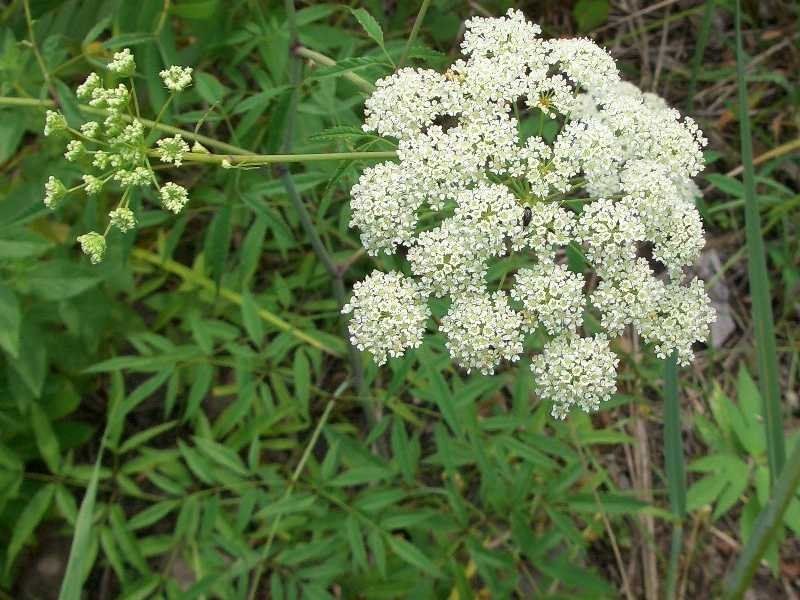
For flowers to thrive, they require hydration.
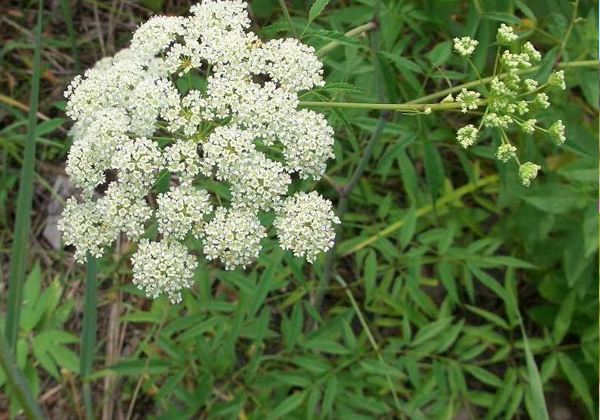
Water is essential for the growth and survival of flowers.
Daffodils are a widely cherished plant for their beauty and are commonly used in gardens throughout Europe. Nowadays, they have also made their way to Vietnam and are often grown in villa settings. It’s essential to note that this plant is highly toxic due to the presence of mezerein. Ingesting the fruit or leaves can cause severe nausea and vomiting followed by internal bleeding, coma, and ultimately death. Therefore, it’s crucial to exercise caution and avoid contact with this toxic plant.
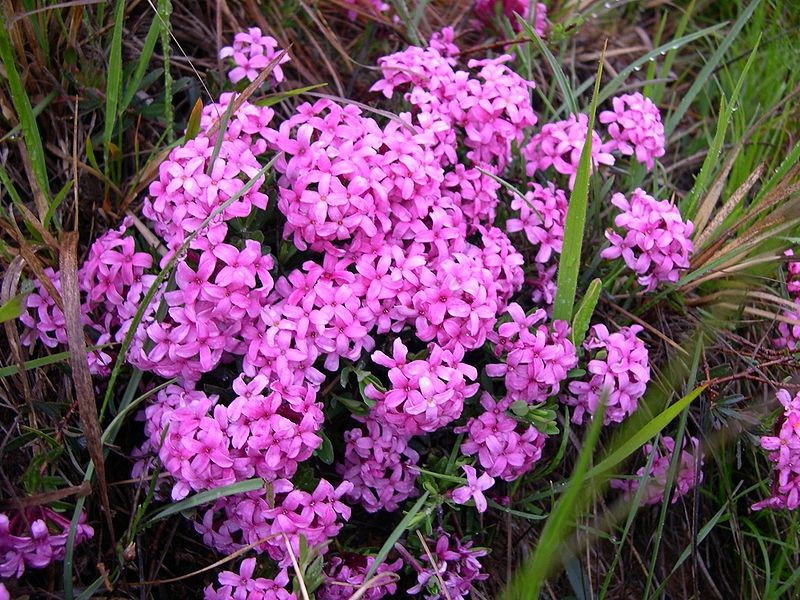
Daffodils are a type of flower that are often associated with the arrival of spring. They typically have bright yellow petals and a trumpet-shaped center, although there are also varieties that come in white or orange. Daffodils are known for their cheerful appearance and are a popular choice for gardens, parks, and other outdoor spaces. In addition to their aesthetic appeal, daffodils also have a pleasant fragrance that can add to the overall sensory experience of being surrounded by these beautiful flowers. Whether you’re looking to brighten up your own yard or simply enjoy the beauty of daffodils in a public space, these lovely blossoms are sure to bring a smile to your face.
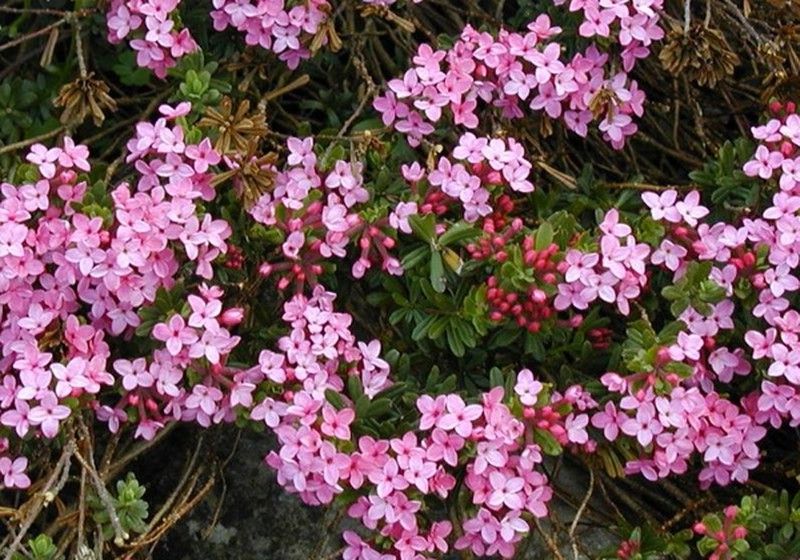
Daffodils are a beautiful type of flower that is typically yellow in color. They are well-known for their trumpet-shaped blooms and are often associated with springtime and Easter. Seeing a field of daffodils in full bloom is a sight to behold, as they create a vibrant sea of yellow that is sure to brighten anyone’s day. Daffodils are also popular in gardens and can be easily grown in pots or containers. They are a great way to add a pop of color to any space and are a favorite among gardeners and flower enthusiasts alike. So if you’re looking to add some cheer and beauty to your surroundings, consider planting some daffodils today!
The hyacinth flower is a fragrant and beautiful plant that blooms at night, emitting tiny particles that stimulate our olfactory senses. It’s no wonder why people love to plant these bushes around their homes – aside from being aesthetically pleasing, it also repels mosquitoes! However, it is important to note that excessive exposure to the scent of the night hyacinth may cause some negative effects on our health. Overexposure may lead to hair loss, dizziness, and discomfort, especially for those with high blood pressure or heart disease. So while we enjoy the sweet aroma of this flower, let’s make sure to keep our exposure in moderation.
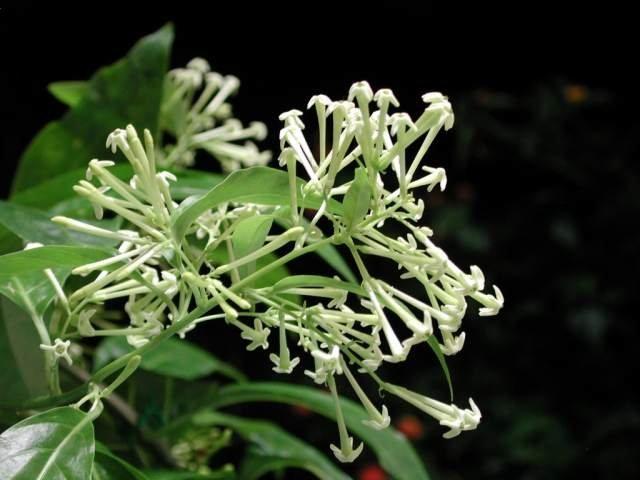
The stunning hyacinth flower is a beloved favorite among garden enthusiasts. Its unique and fragrant blooms make it an excellent choice for adding color and fragrance to any garden or indoor space. With its wide range of hues, from pale pastels to bold blues and purples, there is a hyacinth flower for everyone’s taste. If you want to add a touch of beauty and elegance to your green space, consider incorporating this lovely bloom into your landscaping or décor.
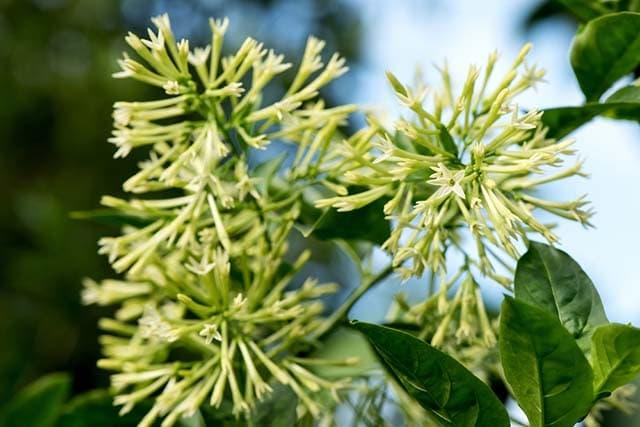
The lovely hyacinth flower is a truly delightful sight to behold. Its vibrant colors and sweet fragrance make it a favorite among many flower enthusiasts. With its unique shape and delicate petals, the hyacinth adds a touch of elegance and beauty to any garden or bouquet. Whether you prefer a bold and bright purple hyacinth or a soft and subtle pink one, these blooms are sure to brighten up your day and bring a smile to your face. So next time you come across a hyacinth, take a moment to appreciate its natural beauty and all that it has to offer.
The Narcissus, commonly known as Daffodils, is predominantly indigenous to the Mediterranean region. This flower holds great significance in Wales and is celebrated on St. David’s Day, where people traditionally wear it. The Daffodil can also be found in Central Asia and China. Its name, “narcissus,” translates to “the water fairy” or “the flower fairy in the aquarium.” It is often compared to “the jade cup and the ivory plate” due to its white and round rim, yellow pistils, and faint yet refreshing scent. Though cherished for its beauty, one must be cautious not to consume this flower accidentally as it contains toxins that can cause paralysis, a red rash, or skin sores.
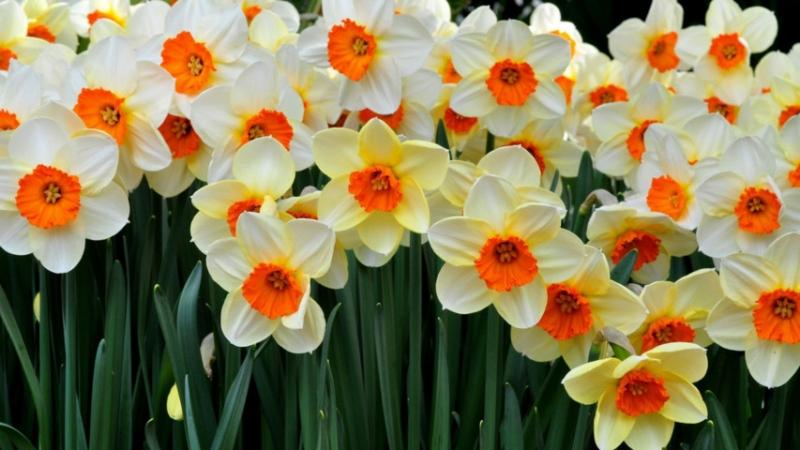
Daffodils, also known as Narcissus, are a type of flower that blooms in the spring and is often associated with the season. They have bright yellow or white petals and a trumpet-shaped center that gives them a unique appearance. Daffodils are popular in gardens and as cut flowers, and are often used in bouquets and floral arrangements. They are easy to grow and care for, making them a great choice for both experienced and novice gardeners. Daffodils are also symbolic of renewal and new beginnings, making them a popular choice for weddings and other special occasions.
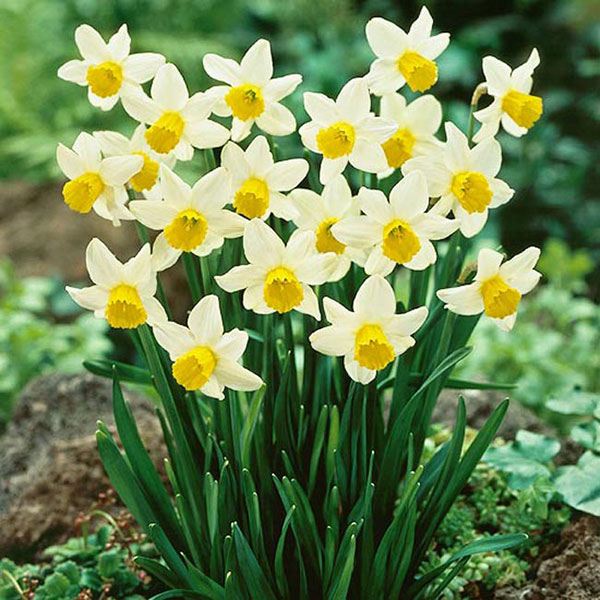
Daffodils are truly a sight to behold. These beautiful flowers are known for their bright yellow color and delicate petals. They bloom in the springtime, and it’s always a joy to see them sprouting up from the ground.
One of the great things about daffodils is that they come in many different varieties. Some have white petals with a yellow center, while others have orange or pink accents. There are even daffodils with multiple layers of petals, which make them look like mini sunflowers!
If you’re interested in planting daffodils in your garden, they’re relatively easy to grow. They prefer well-drained soil and lots of sunlight. You can plant them in the fall, and they should start blooming in the spring. And once they start blooming, they’ll bring a smile to your face every time you see them.
The cannon flower cluster, also known as the firecracker flower cluster, is a stunning plant with tiny flowers that grow in clusters pointing upwards like a tower. These plants typically grow in small groups near trees and can reach heights 2-3 times taller than the original stem of the foxglove. The bell-shaped flowers produced by the cannon flower cluster are truly captivating.
Aside from its beauty, this flower also has medicinal benefits. It is used as a raw material in the production of medication for heart disease, anemia, and constipation. However, it is important to note that consuming the flowers fresh can be poisonous and may lead to cardiac arrhythmias and severe abdominal pain. Therefore, it is best to enjoy the cannon flower cluster solely for its captivating appearance.
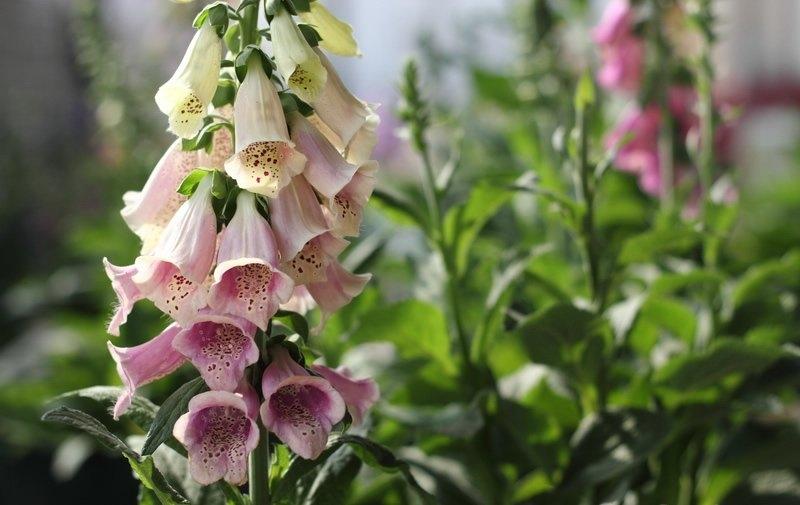
The Mao’s flower, commonly called firecracker flower, is a popular plant known for its vibrant colors and unique shape.
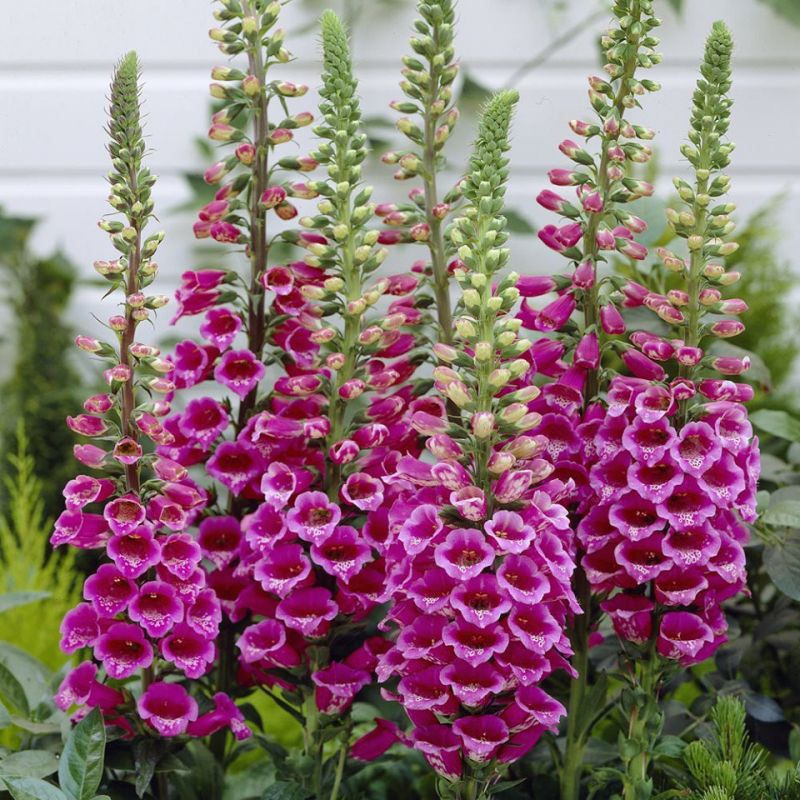
Cluster of cannon flowers
The white baneberry flower, also known as doll’s eyes, is a common plant found in East and North America. While all parts of the flower are toxic, the flowers and fruits contain the highest levels of toxins which can cause the heart to stop beating immediately. The plant’s unique berries are white with what looks like a black pupil but is actually a deep purple color. These attractive berries are supported on twigs and have a deep pink color. In the spring, the plant produces white flowers that appear in clusters measuring up to 10 cm in length. The plant can grow up to a height of 50 cm or more with leaves reaching a maximum length of 40 cm and width of 30 cm. Despite its strange appearance, this plant is one of the most poisonous on Earth, causing many tragic deaths, particularly among children who are attracted to its sweet taste. Due to its lethal toxicity, the doll’s eye tree is also called the devil’s tree.
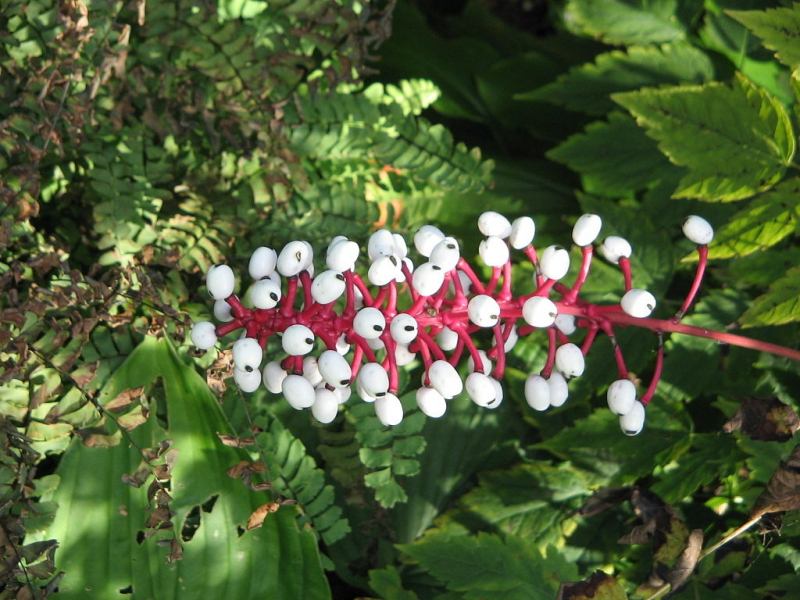
The flower of the White Baneberry plant is known for its unique appearance. It has a small white cluster of little flowers that resemble a string of pearls. This flower is often found in forests and meadows, and its distinctive look makes it a popular choice for gardeners who want to add a touch of elegance to their landscapes. The White Baneberry flower is also used in traditional medicine due to its medicinal properties.
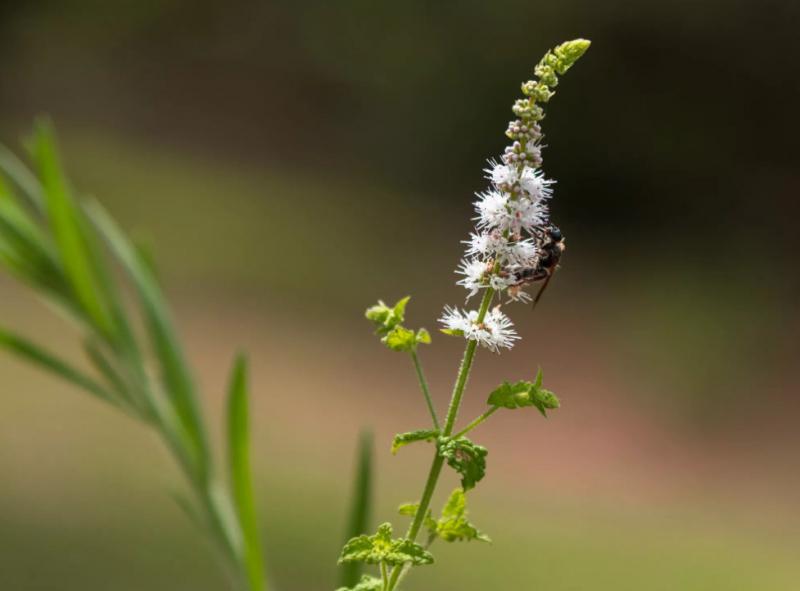
The White Baneberry Flower is a beautiful plant that can be found in various locations. It is necessary to be careful when handling the plant, as its berries are highly toxic. Despite this danger, the plant is still appreciated for its aesthetic beauty and adds a unique touch to any garden or natural setting.
The fragrant guava, also known as five-color flowers, guava brooch, four-quarter flowers, single code, grape guava, and guava flower, is a popular ornamental plant that flowers throughout the year. Its beautiful spherical clusters display a variety of colors including orange, yellow, red, and pink. However, the fruit of this plant contains toxic compounds such as lantanin alkaloid or lantadene A which can lead to symptoms such as intestinal burning, muscle relaxation, and blood circulation disorders. Although it grows wild in many places, people now prefer to cultivate them in pots as ornamental plants. The Tay people even call this plant the house of gas mu.
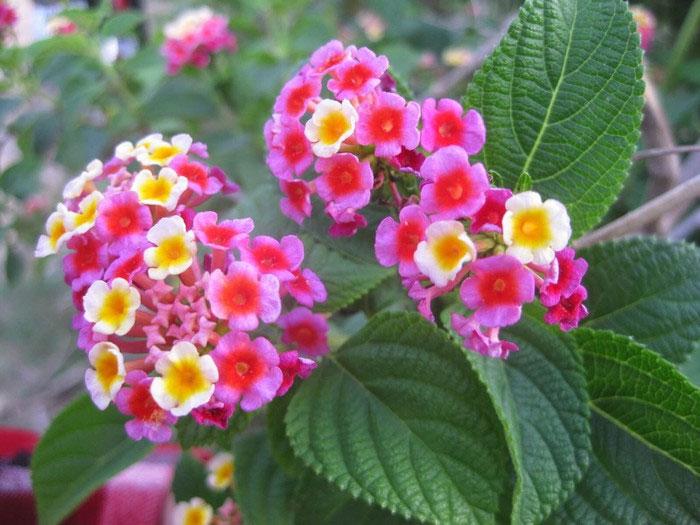
Flowers that come in five different colors.
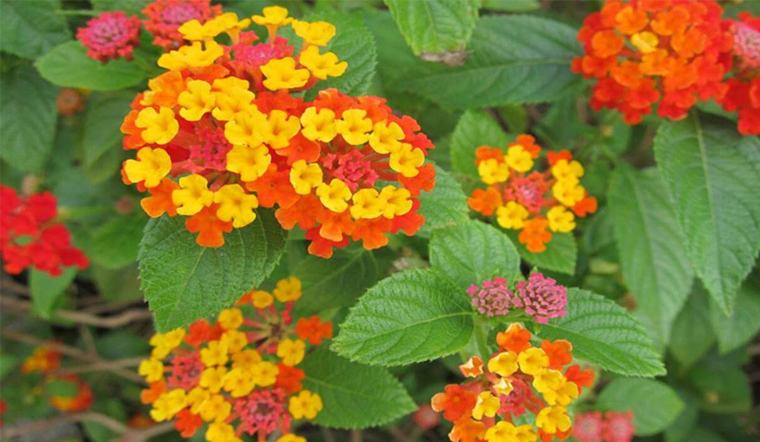
A variety of flowers in five different colors.
The rhododendron is a flower that boasts incredible resilience, thriving in both dry and wet environments. Its warm and radiant beauty is adored by many. Azaleas, a type of rhododendron, are often grown as indoor plants due to their ability to purify the air by absorbing harmful toxins like sulfur dioxide and nitrogen dioxide. However, it’s important to note that rhododendrons themselves contain toxins, particularly the white and yellow varieties. Ingesting even a small amount of these plants can result in poisoning, vomiting, and breathing difficulties. As such, if you plan on planting rhododendrons, it’s crucial to keep them out of reach from children and elderly individuals.
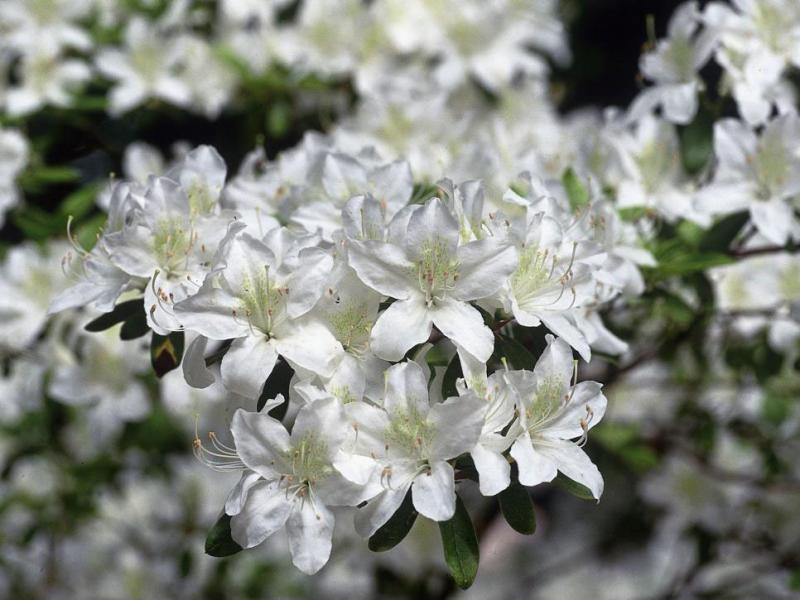
Azalea
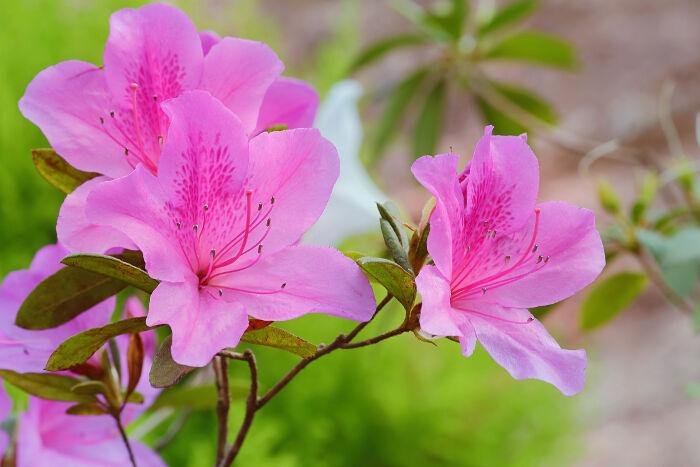
Rhododendron is a beautiful flowering plant that can bring color and life to any garden or outdoor space. This plant is known for its large, colorful blooms and its ability to thrive in a variety of growing conditions. Whether you are a seasoned gardener or just starting out, the rhododendron is a great addition to any landscape. With proper care and attention, this plant can provide years of beauty and enjoyment. So why not consider adding a rhododendron to your garden today?
Mountain laurel, also known as Kalmia latifolia, is a stunning flower with a pink and white color. It typically blooms towards the end of spring and is a common example of a poisonous flower. The beautiful appearance of this flower can be deceiving as it contains two main toxins – andromedotoxin and arbutin. These toxins have detrimental effects on the human body. They can cause irregular heartbeats in different areas of the heart, leading to severe health problems. Ultimately, the toxins can cause the heart to stop completely, resulting in death.
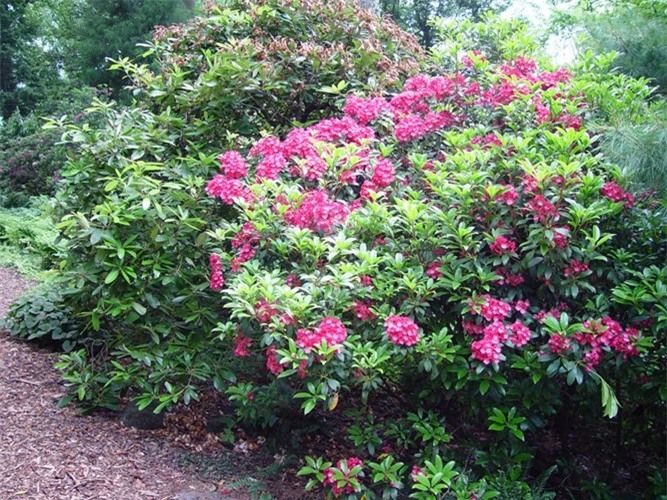
Laurel Mountain is a beautiful natural site that is worth visiting. Its stunning scenery and serene environment offer a great escape from the hustle and bustle of city life. If you’re looking for a place to unwind, Laurel Mountain is the perfect destination. With its lush greenery, breathtaking views, and fresh air, you’ll definitely feel rejuvenated after spending some time here. Don’t forget to bring your camera as there are plenty of photo opportunities waiting for you at Laurel Mountain!
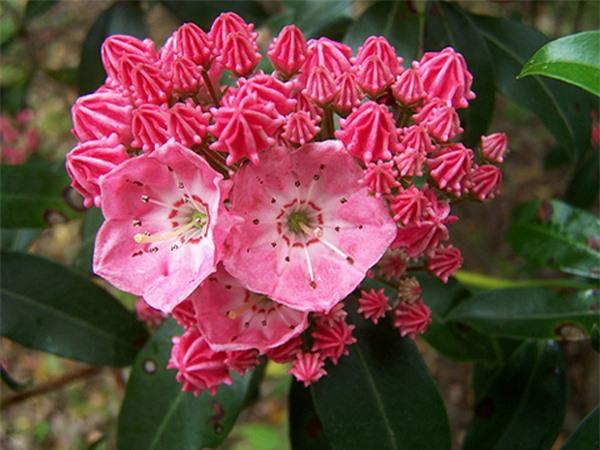
Meet Chi Yunmen, a stunning floral species that was once exclusive to Antarctica, but is now cultivated in various locations. However, this plant contains a peculiar toxin called calcium oxalate, which forms needle-like crystals within the body. Even a tiny amount of this poison can be fatal, so it’s best to keep your distance from Chi Yunmen.
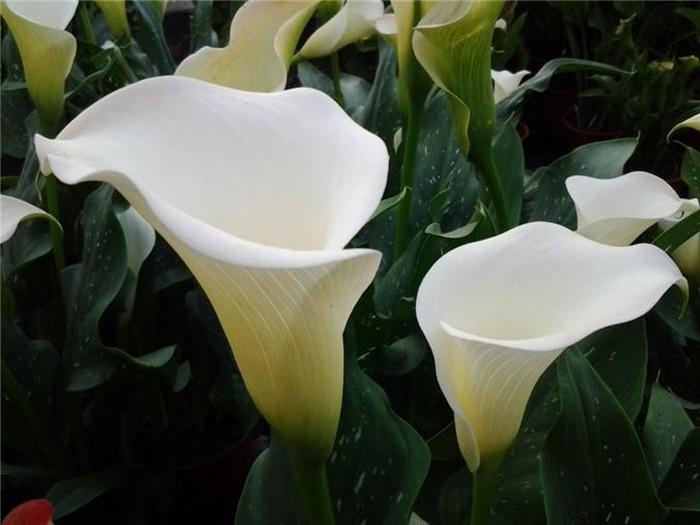
Have you heard of Chi Yunmen? He was a Chinese Zen master who lived during the Tang Dynasty. His teachings emphasized the importance of being present in the moment and experiencing life fully. Chi Yunmen believed that true wisdom comes from within, and that we must cultivate our inner selves in order to lead fulfilling lives. He also encouraged his followers to be humble and compassionate towards others. Overall, Chi Yunmen’s teachings promote mindfulness, self-reflection, and kindness towards all beings.
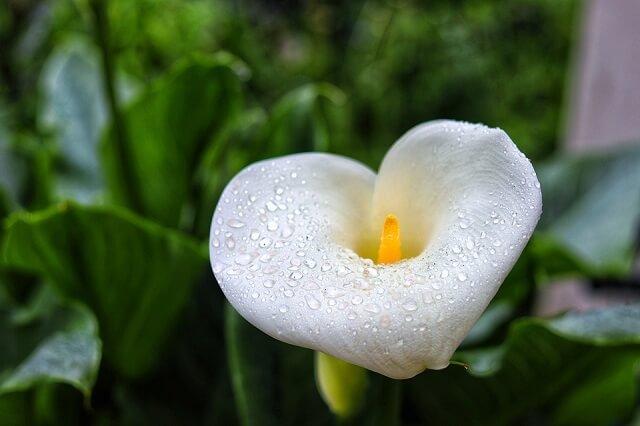
Chi Yunmen was a Chinese Buddhist master who lived during the Tang dynasty. He was known for his teachings on the importance of mindfulness and meditation in attaining enlightenment.
The Dog Bait Flower, also known as Colchicum Autumnale, is a plant that can be found in England, Europe, and New Zealand. Its scientific name is derived from the toxic properties of its flowers, which can be fatal to both humans and animals.
The primary toxin found in the plant is colchicum, which has similar effects to arsenic poisoning. Unfortunately, there is no antidote available for colchicum poisoning, and the victim must suffer a slow and painful death if they are poisoned.
It’s important to exercise caution when encountering this plant and to keep pets and children away from it to prevent accidental ingestion.
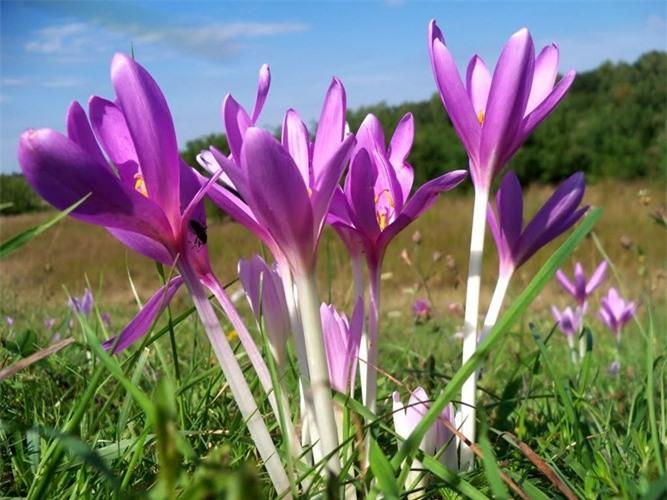
The flower commonly known as the “dog bait” has distinctive features that make it easily recognizable. Its petals are typically white or light pink with a yellow center, and it grows on long stems that can reach up to two feet in height. This flower is often found in fields, meadows, and other natural habitats.
Despite its ominous name, the “dog bait” flower is not actually used to lure dogs. The name likely comes from the fact that the flower emits a strong odor that some people find unpleasant, which may repel dogs and other animals from the area where it is growing.
In addition to its distinct appearance and odor, the “dog bait” flower has some potential medicinal properties as well. It has been used in traditional medicine to treat a variety of ailments, including inflammation, pain, and respiratory issues.
Overall, the “dog bait” flower is an interesting and unique plant that has played a role in both folklore and traditional medicine. While it may not be the most popular or well-known flower, it certainly deserves recognition for its distinctive traits and potential benefits.
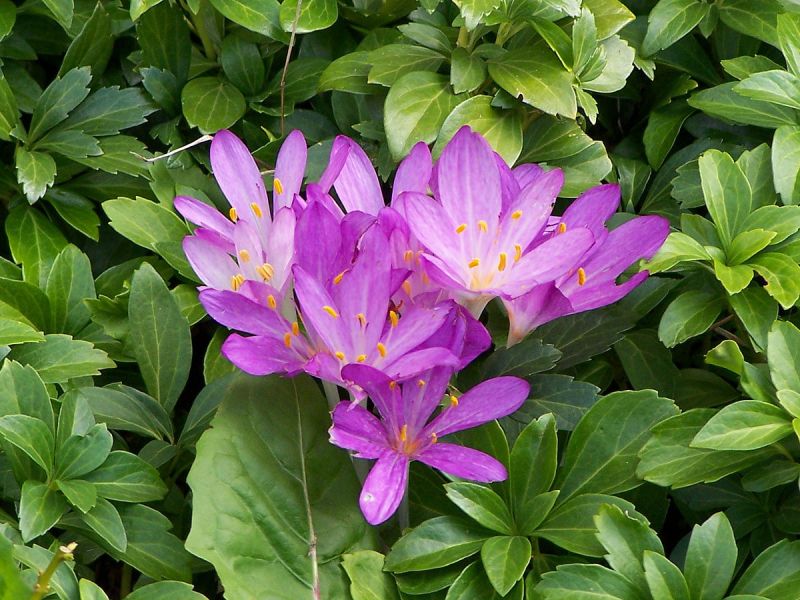
The presence of poisonous flowers in our environment can pose a significant threat to our health and well-being. Therefore, it is essential to be knowledgeable about the different types of flowers and their potential dangers. In this article, I aim to educate flower enthusiasts about the risks associated with poisonous flowers. One such harmful flower is the dog bait flower, which, if consumed, can lead to unforeseen consequences. It is crucial to exercise caution and avoid such dangerous flowers whenever possible to prevent any mishaps. Let’s learn more about flowers and ensure that our love for them does not put us in harm’s way.


















